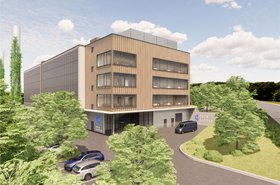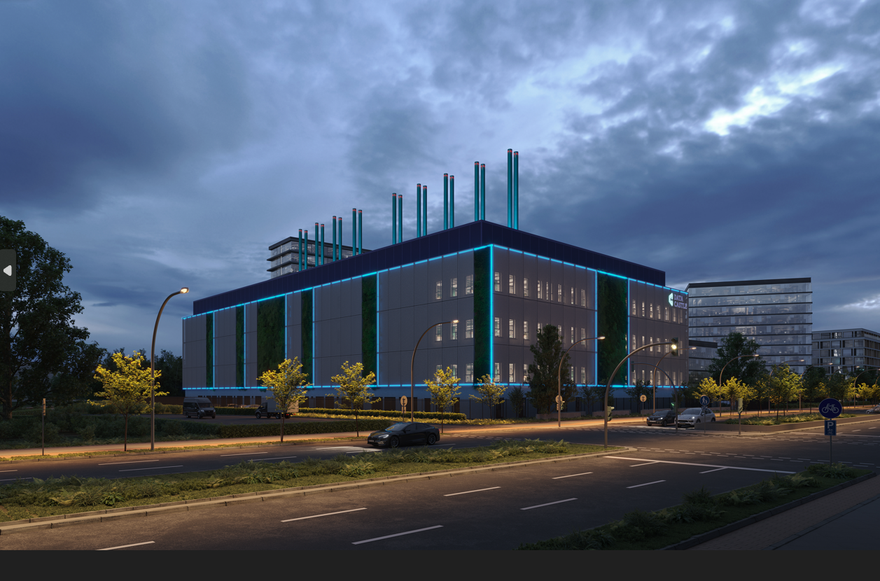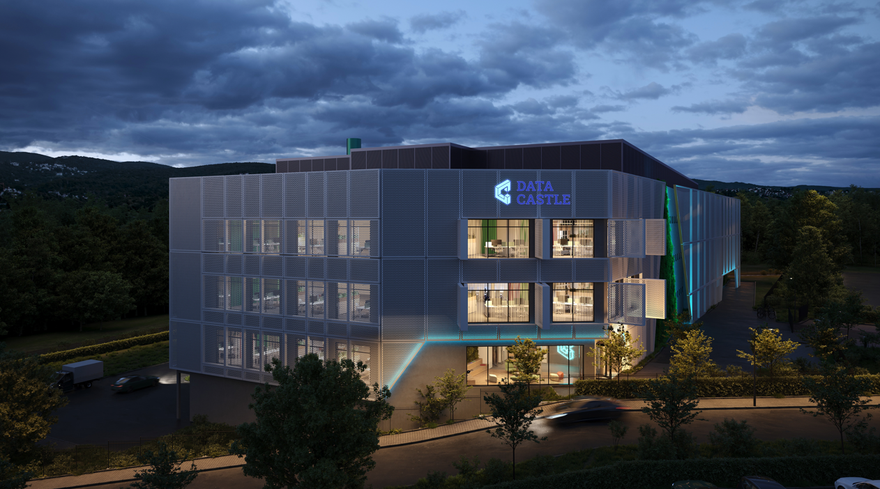As society comes to terms with unprecedented progress and challenges, data centers – once anonymously connected warehouses of storage and processing – stand at the edge of a rebirth, transitioning towards more visible and accountable stewards of environmental sustainability. This transformative journey is a proxy for the broader shift in the technology sector, where environmental impact is now a critical metric of success and responsibility.
The environmental imperative
As the world grapples with the urgency of climate change, data centers, traditionally energy-intensive, can grasp the opportunity to reinvent themselves. With global data center electricity demand projected to reach an astounding 400 TWh by 2030, the imperative to mitigate their environmental impact is clear.
Europe, as a global data center hotspot, has witnessed this metamorphosis first-hand. Here, data centers are not only embracing their role as digital custodians but also as innovators in energy reclamation.
Heat recovery: Its time has come
Leading this charge towards the future are pioneering projects that have transformed waste heat into a resource, championing the integration of data centers into local energy grids. Innovative operators like Data Castle in Frankfurt and Berlin are pioneering state-of-the-art facilities designed from the ground up to capture and reuse waste heat, setting new benchmarks for efficiency.
In Denmark, Facebook's data center contributes to heating nearly 7,000 homes by upcycling excess heat, while a 1.4 MW Frankfurt data center has upgraded facilities to provide heating for over a thousand apartments.
The United Kingdom's Telehouse North Two demonstrates the community potential between high density metropolitan centers and data centers, where waste heat is now a valuable commodity heating local businesses and residences.
Regulatory catalysts and economic incentives
The shift towards heat recovery is not solely driven by corporate altruism; it is also a response to an evolving regulatory framework. The European Union's Energy Efficiency Directive and Germany’s Energy Efficiency Act exemplify legislative catalysts incentivizing waste heat recovery. Denmark’s heat tax law further encourages data centres to repurpose their thermal output, providing financial reimbursements that underscore the economic viability of heat reclamation.
Strategic communication and community engagement
Social permission will become increasingly essential for ever-larger power and space requests by data centers. Shedding the 'security by obscurity' mindset requires data centers to engage in transparent and strategic communication with their local communities, perhaps before the zoning application becomes public knowledge.
Operators are now initiating dialogues, sharing the advantages that extend beyond the data realm – advantages like environmental sustainability and local economic enrichment. This open exchange builds trust and positions data centers as community partners rather than isolated digital fortresses.
Technological integration and AI-driven optimization
The inevitable integration of data centers into the energy grid will be accelerated by technological advancements. Artificial Intelligence is likely to play a pivotal role – see Key Terms below. This technological leap is not merely incremental; it is revolutionary, ushering in an era where data centers are core components of a smart, integrated energy grid.
The new paradigm of data center operations
As this story develops, data centers can emerge as more than infrastructure backbones of the digital age – they become active contributors in the quest for sustainability. We already have many examples of such integration, where data centers contribute to local energy solutions, creating a closed-loop ecosystem that benefits all stakeholders.
AI and GPU advancements: A catalyst for change
The technological advancements in AI and GPU applications are driving rack densities to 50 kW and beyond, necessitating a shift to liquid cooling systems. These systems not only address the cooling demands of high-density racks but also enable the capture of higher-grade heat.
This captured heat, in turn, can be repurposed more effectively, opening avenues for its use in district heating networks and other industrial processes, thus aligning data center operations with circular economy principles.
Embracing liquid cooling and heat recovery
Embracing liquid cooling is not merely a response to increased computational demands; it is a strategic move towards greater energy efficiency and environmental responsibility. By transitioning to liquid cooling, data centers can harness the higher-grade heat generated by intense computing processes for beneficial uses, such as warming residential areas or supporting agricultural facilities, further closing the loop between technology and sustainability.
The road ahead: Challenges and opportunities
Nevertheless, the road to fully integrating data centers into local energy economies is not without its challenges. The technical complexity of retrofitting existing facilities to harness waste heat is significant.
It requires a delicate balance between the primary role of data centers – ensuring uninterrupted digital services – and their emerging function as grid-integrated energy providers. While retrofitting existing sites can prove complex, new facilities like Data Castle’s flagship data centers in Frankfurt and Berlin prove that compliance, heat reuse and circular principles can be integrated seamlessly when sustainability is the priority from the initial planning stages.
Envisioning a future of integrated sustainability
The imperative for data centers to undergo a sustainability transformation is clear. Pioneering waste heat capture efforts have already demonstrated the feasibility and community benefits of repurposing thermal energy for heating applications. These “proofs of concept” represent the first steps on the path towards fully integrating data centers into local renewable energy ecosystems.
However, effectively making this vision a widespread reality will require overcoming scale and complexity barriers. Retrofitting existing infrastructure demands careful planning to balance computing delivery with energy provision.
Data centers will need to hone specialized expertise in efficient facility design. Building stakeholder alignment between operators, legislators, district energy companies and communities can also be challenging.
Nevertheless, the opportunities are plentiful – from enhancing efficiency using innovations like AI and heat pumps to forging new revenue models around heat recovery. The solutions implemented today will serve as templates for the sustainable data center of tomorrow – one that operates transparently, maximizes exergy, and participates actively in an integrated, circular local energy economy.
Purpose-built facilities like Data Castle’s that factor in sustainability from the outset represent the future, where concepts like heat reuse, AI optimization of operations and built-in client compliance reporting work synergistically to reduce environmental impact.
The team is pushing sustainability from a very early stage, starting with the site location, design optimization, efficient planning and construction, and operations, with the vision and ambition to be one of the greenest data center platforms in Germany.
Adopting on-site renewables, encouraging flexible computing loads, and embracing concepts like exergy can help data centers evolve from passive “energy-hog” warehouses to digitally enhanced stewards of environmental sustainability.
This is no longer an ambitious vision but an urgent, attainable necessity. As the digital cosmos grows more pervasive, aligning its physical underpinnings ever closer with principles of sustainability and renewal represents one of the defining challenges of our times.
Key terms explained
Exergy
Exergy is a concept crucial for evaluating the efficiency of energy systems based on their ability to perform useful work. It represents the quality or potential utility of energy, unlike energy which is solely quantitative. When energy transforms from electricity into waste heat, exergy is destroyed since the energy has changed to a less ordered form with less capacity for utilization.
The goal in sustainable systems is maximizing exergy extraction for enhanced usability. For data centers, effectively elevating the low exergy of waste heat into more useful higher grade heating can enable its productive reuse in heating applications.
Heat pumps
Heat pumps act much like reversible air conditioners, using the thermodynamic properties of specialized fluids to transfer heat between locations. The fluid evaporates to absorb heat at low temperatures from data center waste streams before condensing to release heat at temperatures exceeding 160°C.
The efficiency and adaptability of industrial-grade heat pumps allows amplifying low quality waste heat into higher grade heating for reuse in district heating networks, facilities heating and industrial processes. This represents a paradigm shift in sustainability.
Role of AI
AI will be pivotal in optimizing data center operations for ideal waste heat recovery. It can fine-tune temperature set points, adjust server workloads, eliminate inactive applications, and seamlessly integrate battery backup to enable predictively offering additional capacity to the grid when heat demand peaks.
This will allow dynamic synchronization of computing demands with heating requirements, minimizing global energy waste. The integration of AI will allow modern data centres to function as responsive nodes in smart, sustainable energy networks.
More from Data Castle
-

Sponsored Data Castle new owner of 40MVA data center site in Berlin
Data Castle acquires 40MVA data center site outside Berlin, with construction due to start soon
-

Sponsored Data Castle new owner of 40MVA data center site in Berlin
Data Castle acquires 40MVA data center site outside Berlin, with construction due to start soon
-

Data Castle launched to operate data centers in Germany, starts constructing first site in Frankfurt
Few details given about timeline or target market



